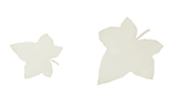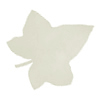


|
An evergreen growing 25 - 60 ft tall with soft reddish-brown bark and yellow flowers. Cinnamon is an ancient herbal medicine which was first written about in the Jewish religious text the Torah. It has a long history of use in India and was used medicinally in Egypt and parts of Europe from about 500 BC. Cinnamon is traditionally used in India and Europe as a warming herb for "cold" complaints and was often combined with Ginger. The actions and uses of Cinnamon are very similar to Ginger - Cinnamon's key actions are as a warming stimulant, carminative, antiviral, antispasmodic and antiseptic. It is used to stimulate circulation, especially in the extremeties. Traditionally used for a a variety of digestive problems including nausea, vomiting and diarrhoea, it is also a supportive, strengthening herb for a weak digestion. The antiviral properties of Cinnamon makes it an ideal addition to hot drinks during the Winter months and as a remedy and preventative of colds and flu. Cinnamon has a slight emmenagogic action - it stimulates the uterus and encourages menstrual bleeding. In India it was traditionally taken after childbirth as a natural contraceptive. In Chinese medicine the twigs are seen as warming for the peripherals and is used internally to encourage circulation to cold hands and feet. The inner bark is seen as more centrally warming and is used with "cold" problems associated with low energy, dibility, kidney weaknes and rheumatic problems. Research shows that Cinnamon is one of the spices which may help the body use insulin more effeciently. Essential oil of Cinnamon is obtained from the bark or the leaves. The oil from the bark smells like the spice and is a very strong skin irritant and should never be used on the skin. It's main constituent is cinnamaldehyde. Oil from the leaves smells more like cloves, and whilst still being an irritant is not so powerful and may be used on the skin well diluted and with caution. The main constituent found in the leaf oil is eugenol. My main use for cinnamon essential oil tends to be as a comforting, spicy addition to the oil burner - especially during the Winter months. The spice, ground or as the familiar quill twigs, is a wonderful addition to many culinary dishes and I use it as a favourite (along with Ginger) in cakes, biscuits and warm drinks. Cassia, Cinnamomum cassia, is a very close relative of Cinnamon with similar constituents and therapeutic properties. Cassia is widely uesd in China and has been since at least 2700 BC, and is listed in an Egyptian papyr of 1500 BC as an external remedy for skin disorders and ulcers. !
Cinnamon can be toxic if taken in excess. Do not
take as a medicine during pregnancy ! |
|

Gaia's Garden Library
Non Fiction Section : Gaia's Garden Herblore | Susun S. Weed Articles | Articles and Musings
Fiction Section : Short Stories & Prose| As Told
By Cat | Public Domain Texts| Poetry
Shop | Library | Gallery | Forum | Contact | Links







